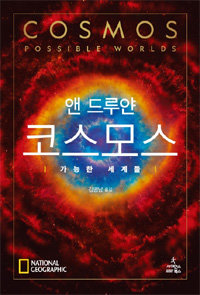When will humans understand the universe?
When will humans understand the universe?
Posted March. 28, 2020 07:56,
Updated March. 28, 2020 07:56

“In order for science to sincerely and fully fulfill its mission like art, the public must understand the achievements of science, including not only its surface but also a deeper meaning.”
Few scientists would have put into practice this statement, which was originally made by Albert Einstein at the opening ceremony of the World Expo in New York in 1939, better than Ann Druyan and her husband, Carl Sagan. Carl Sagan broke the wall between science and the public in 1980 with his unrivaled science book “Cosmos” and a TV documentary of the same title. Anne Druyan, who wrote the documentary’s scenario with astronomer Steven Soter while standing by him at the time, produced a sequel documentary “Cosmos: Space Time Odyssey” in 2014, and published this book this year, which marks the 40th anniversary of the publication of “Cosmos.”
“Cosmos” may have presented the grandiose message of Carl Sagan full of desire to understand the universe in the form of epic. On the other hand, Anne Druyan’s book delicately unravels the story of the universe, life, past and future, and humans based on the humbleness that “There is still a long way to go for us to end the efforts to understand ourselves and the greater nature that we belong” by superimposing the scientific achievements of the past 40 years.
Thirteen chapters of the book range from the story of human beings inventing agriculture for the future to the story of life overcoming hardships that seem impossible to survive, the story of dumping the childish hope to become the center by ourselves due to science, the story about the realization that other creatures are also conscious, and the story about advance into the vast ocean of the universe. The book is expected to give the pleasure by presenting stories of less familiar scientists such as Yuri Kondratyuk, Karl von Frisch, and Nikolai Wawilow.
The author warns that humans, who have realized that they are merely beings existing on a “pale blue dot that is just one of the trillions of other worlds,” are now causing a catastrophe on planet earth. However, the author stresses that there is hope if we have a sense of responsibility for future generations by internalizing faith in science as a system of belief.
Just taking a glimpse of 200 photographs, paintings and artists’ renditions placed at the right location along with accurate explanations will surely give you a sense of fullness that would arise from reading one more book.
Dong-Yong Min mindy@donga.com







